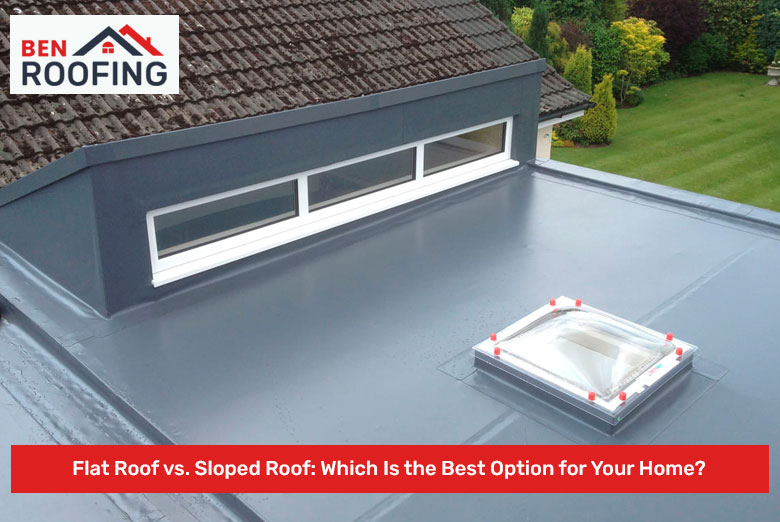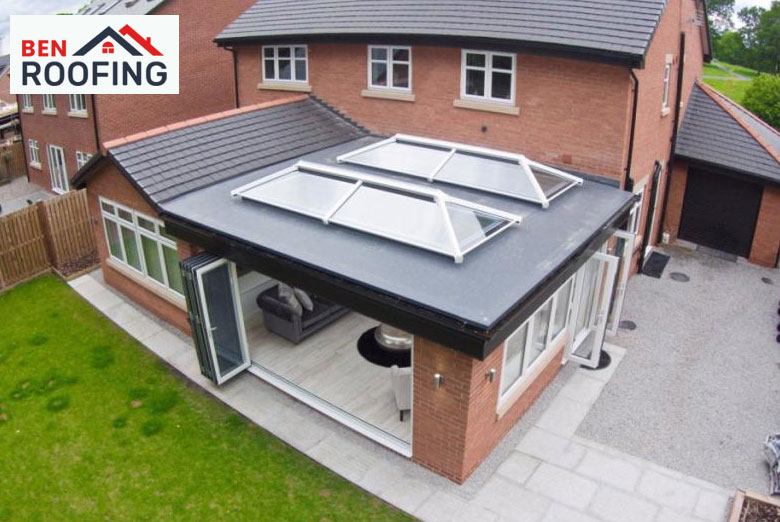Flat Roof vs. Sloped Roof: Which Is the Best Option for Your Home?
Choosing a roof for a house is a big decision. Two common types of roofs are flat roofs and sloped roofs. Understanding roof types helps people make good choices for their homes. This knowledge is important for keeping our houses safe and comfortable. Furthermore, it helps us choose the right style for our needs. So, let’s learn about flat roofs and sloped roofs together.
What is a Flat Roof?
A flat roof looks almost completely flat. However, it actually has a very slight slope. This small slope helps water drain off the roof. Without this slope, water would pool on the roof. This pooling water could cause leaks and damage. Flat roofs are common on commercial buildings. Also, sometimes people use them on houses in dry climates. These roofs can create extra usable space.
What is a Sloped Roof?
A sloped roof has a noticeable slant. This slant helps water and snow slide off easily. Because of this, sloped roofs are very common in areas with lots of rain or snow. There are many different types of sloped roofs. Some common types include gable roofs and hip roofs. These different shapes offer various advantages.
Advantages and Disadvantages of Flat Roofs
| Advantage | Disadvantage |
| Can create usable rooftop space | Requires more frequent maintenance |
| Easier to build in some cases | Can be prone to leaks if not properly drained |
| Can be less expensive to build | Shorter lifespan compared to some sloped roofs |
| Suitable for solar panel installation | Not suitable for heavy snowfall areas |
First, flat roofs offer the advantage of usable space. This space can be used as a garden or patio. Next, they can be easier to build on certain structures. After that, they may cost less to build initially. Finally, they are good for installing solar panels.
On the other hand, flat roofs have some disadvantages. First of all, they need more maintenance. Secondly, they can leak if not properly drained. Thirdly, they might not last as long as some sloped roofs. Lastly, they are not ideal for areas with heavy snowfall.
Advantages and Disadvantages of Sloped Roofs
| Advantage | Disadvantage |
| Excellent water runoff | More complex to build in some cases |
| Longer lifespan | Can be more expensive to build |
| Good insulation potential | Less usable rooftop space |
| Many different style options |
First of all, sloped roofs provide excellent water runoff. This prevents leaks very well. Next, they usually have a longer lifespan. Then, they offer good insulation potential. This helps save energy. Finally, they come in many different styles.
However, sloped roofs also have some drawbacks. For example, they can be more complex to build on certain shapes. Also, they can be more expensive to build. Furthermore, they offer less usable rooftop space compared to flat roofs.
Which Roof is Right for You?
Choosing between a flat roof and a sloped roof depends on several things. These things include the climate, the building design, and personal preferences. If you live in a dry climate and want usable rooftop space, a flat roof might be a good choice. However, if you live in an area with lots of rain or snow, a sloped roof is usually a better option.
Also, the design of your house plays a big role. Some house styles look better with flat roofs. Other styles look better with sloped roofs. Finally, personal preferences matter too. Some people simply prefer the look of one type of roof over the other. Therefore, it is important to consider all of these factors when making your decision.

Maintenance for Both Roof Types
Both flat and sloped roofs need regular maintenance. For flat roofs, it is important to check for ponding water and debris buildup. Also, you should inspect the roof membrane for any damage. For sloped roofs, it is important to check for damaged shingles or tiles. Also, you should clean gutters and downspouts regularly.
Additionally, regular inspections by a professional are recommended for both roof types. This can help identify potential problems early on. Therefore, regular maintenance can help extend the life of your roof. Thus, it is a very important part of homeownership.
